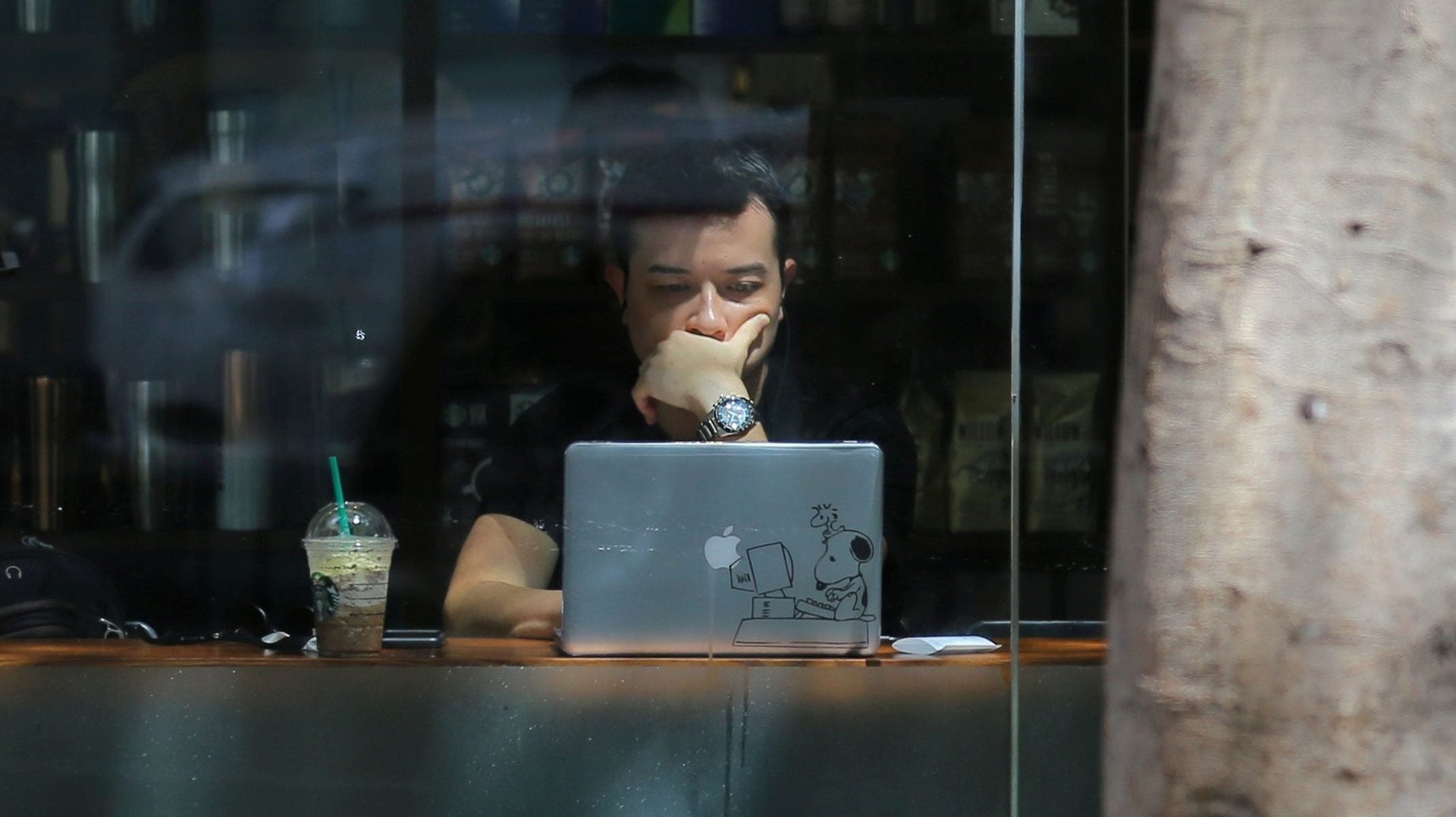My “work from home” job is studying how to keep other remote workers engaged
Last week I had a strategy meeting with a colleague from Ireland, organized online meditation classes, and hosted a workshop, all without leaving my house in Toronto, Canada. Not only am I a remote worker—like a growing segment of the workforce—but my job is to understand how an organization with remote workers can keep them connected.


Last week I had a strategy meeting with a colleague from Ireland, organized online meditation classes, and hosted a workshop, all without leaving my house in Toronto, Canada. Not only am I a remote worker—like a growing segment of the workforce—but my job is to understand how an organization with remote workers can keep them connected.
When your home doubles as your office, things like employee engagement and social connection take on a new meaning. For many remote workers, feelings of isolation and loneliness put their engagement at risk, leaving organizations to find new ways to foster belonging beyond traditional activities like in-person events.
As a Remote Employee Experience Specialist at Shopify, my role is to keep a pulse on the employee experience of our more than 1,000 full-time remote employees. My days are spent understanding the intricacies of the remote life by identifying new opportunities to elevate employees’ remote experience. Through in-depth surveys, focus groups, and experiential discussions with veteran remote workers, we’re able to gather unique data to improve our work experience. Communication and connectivity tools like Slack, Google Hangouts, and Zoom help power remote interactions around the world, and it’s also part of my job to determine how our team can best use these technologies to improve their experience. Once we have identified an impactful opportunity, we start building a plan to implement the new initiative and gather feedback on a regular basis to test the strength of the program.
I live the remote employee experience every day. Working outside of a traditional office keeps me focused on providing the best experience for our remote teams.
Intentional communication should be at the forefront
When employees work from home, the way they interact with colleagues, other teams, and each other differs from the dynamics of an office, and establishing rules of engagement for remote working is essential. At Shopify, we encourage team members to share their working hours and timezone in their public calendars, so that meetings are auto-declined if they are outside of those working hours. This helps employees maintain work-life harmony. We also recommend that employees snooze message notifications on their communication tools when they have finished the day and share offline conversations with employees who were not present. These tactics can go a long way in ensuring employees don’t feel disconnected within the team.
Focus on building relationships and establish opportunities for employees to connect
Remote workers often feel isolated, so don’t discount the importance of taking the time to get to know your employees. Leaders play a significant role in remote engagement. Making a conscious effort to build relationships and trust, or even going the extra mile to share personal notes, small gifts, or notes of appreciation in the mail makes a difference.
Activities such as virtual coffee chats can encourage discussion of non-work related activities and help facilitate friendships with colleagues. At Shopify, we have dozens of Slack communities organized by different interests to help employees engage with each other online. Periodic in-person gatherings, such as annual conferences or co-working events, help take those online connections offline.
Design for your organization
There is no one-size-fits-all strategy for employee engagement in general, and the same holds true for the remote experience.
There are a number of great resources and books (such as Remote: Office Not Required) that offer tips and best practices, but the most effective strategy is one that keeps your organization’s values, culture, and employee needs in mind. For example, at Shopify, we have an “own your own development” benefit that empowers employees to pursue valuable and strategic learning opportunities for their personal growth. Attending a conference, signing up for a new course, or learning a new language are just a few examples of how employees are able to use this benefit.
Carving out intentional time to understand and empathize with remote workers in your organization is crucial. Through one-on-one chats, focus groups, and engagement surveys, you can learn how they work, what they enjoy, and what’s not working for them. This will help build an intentional and impactful program that adds authentic value to your organization. The worst thing you can do is design experiences and perks that don’t align with your employees’ goals.
Ultimately, you might learn what matters most to employees through missteps or unmet expectations. How often does your team like to communicate? If you don’t actively reaching out on a regular cadence, it can be isolating for certain people. What does your team value most? These are just a few question to ask yourself, but always remember to embrace your mistakes as moments of feedback on what can be improved or implemented. As this segment of employees continuing to grow, the answers may continue to change and evolve.